Town Trail
Two visitors from the English Midlands looking at the introductory board, which shows the route of the trails and points to the attractions of Tywyn and the surrounding area, both historic and natural
Neptune Hall and the South Shore
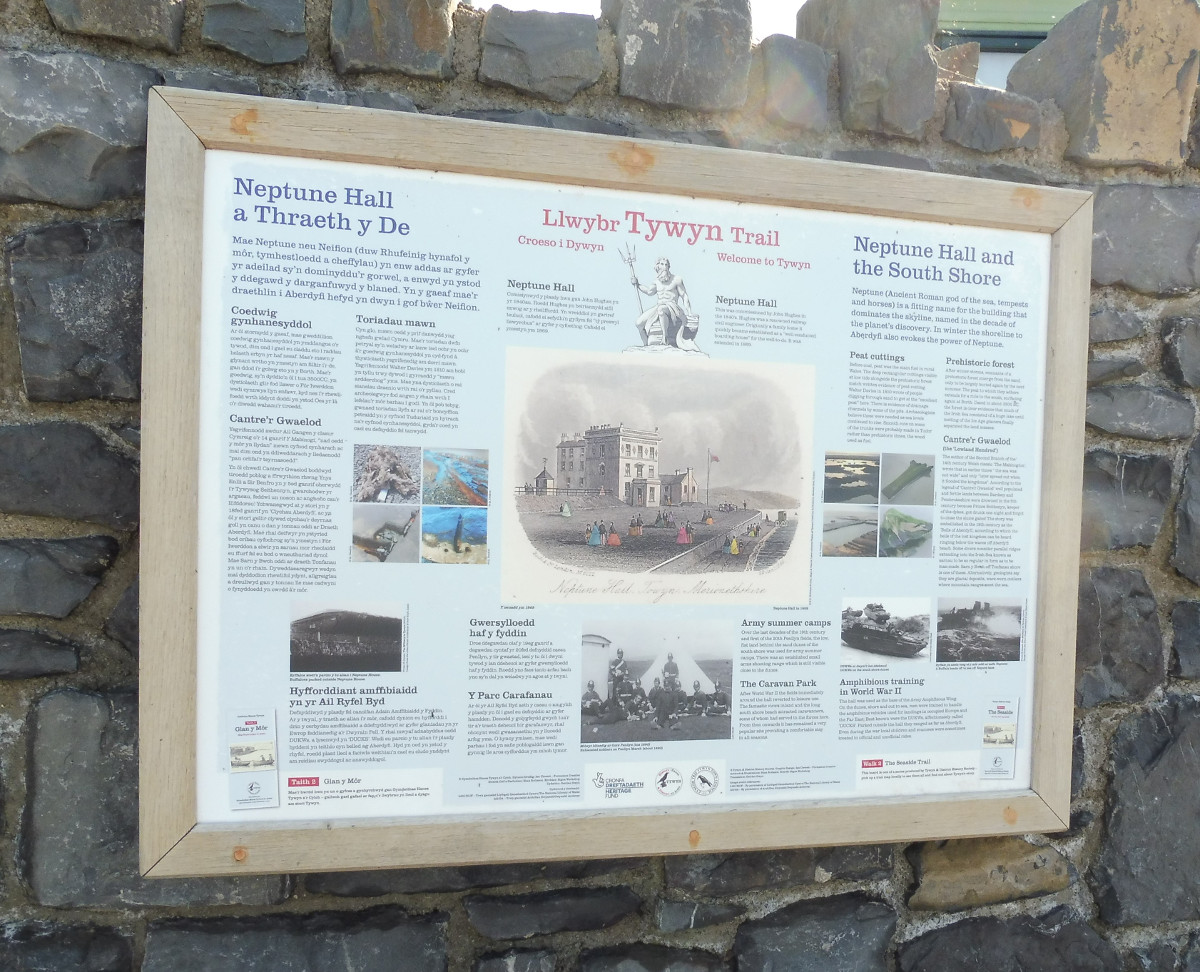
The hall is a landmark building, prominent from the sea and shoreline in both directions. It has a fascinating history, dating back to the middle of the nineteenth century. Both the hall, its grounds and the shoreline were used extensively in World War 2 for training on amphibious vehicles. The shore, wild in winter, changes in appearance to reveal the prehistoric forest that is also to be seen at Borth. Pictures and text explain that history and the nature of later extensive, unique peat diggings on the same site.
Bryn y Môr - a Second World War Crash Site
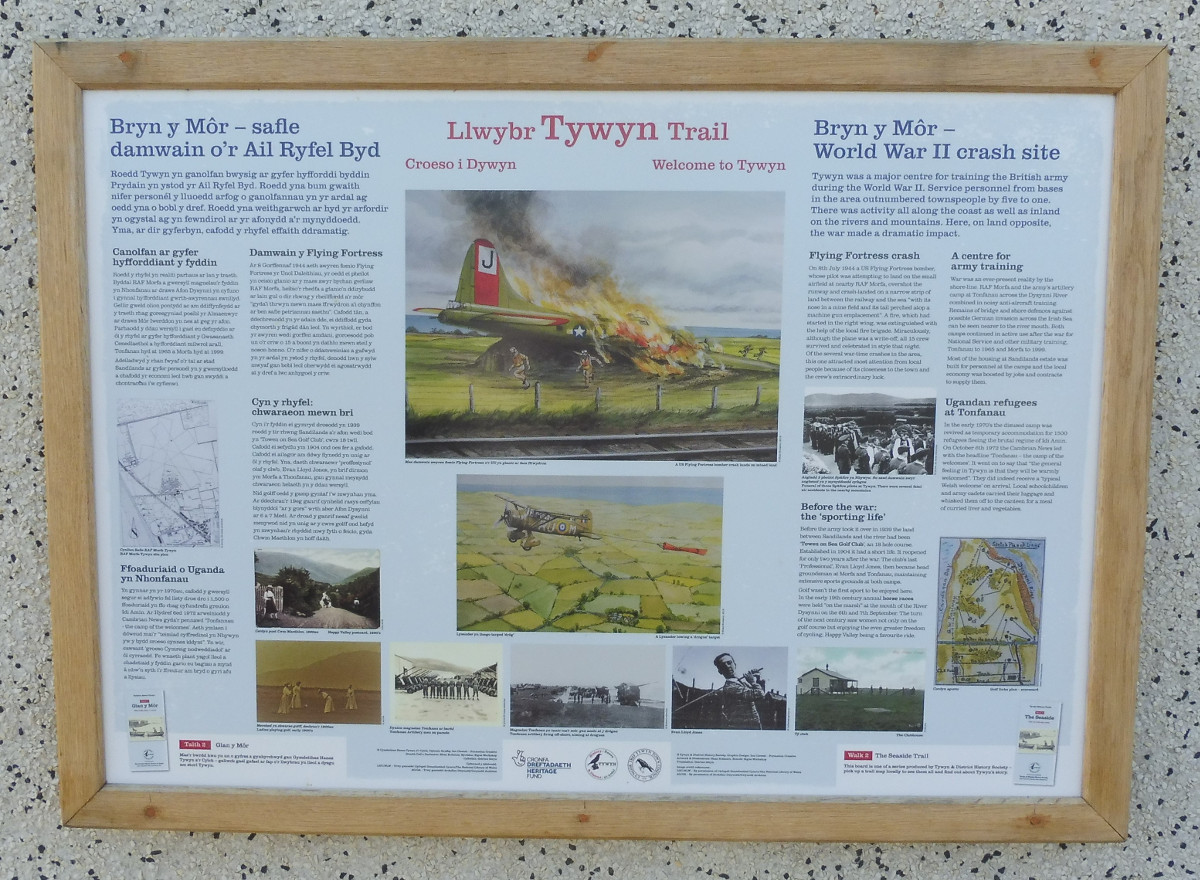
Access is either from the town via Idris Villas road or from the prom across the mainline railway with the Bryn y Mor shop displaying this board on your right. Tywyn was a major centre for training and military air traffic during the Second World War and one of the events of those years that entered local legend was the crash of an American bomber nearby out of which all fifteen crew emerged alive. Three decades later in the 1970's nearby Tonfanau was used to house Ugandan Asian refugees and the whole area between this shop and the River Dysynni was once a golf course. Pictures and text cover these points.
Leisure at the sea front
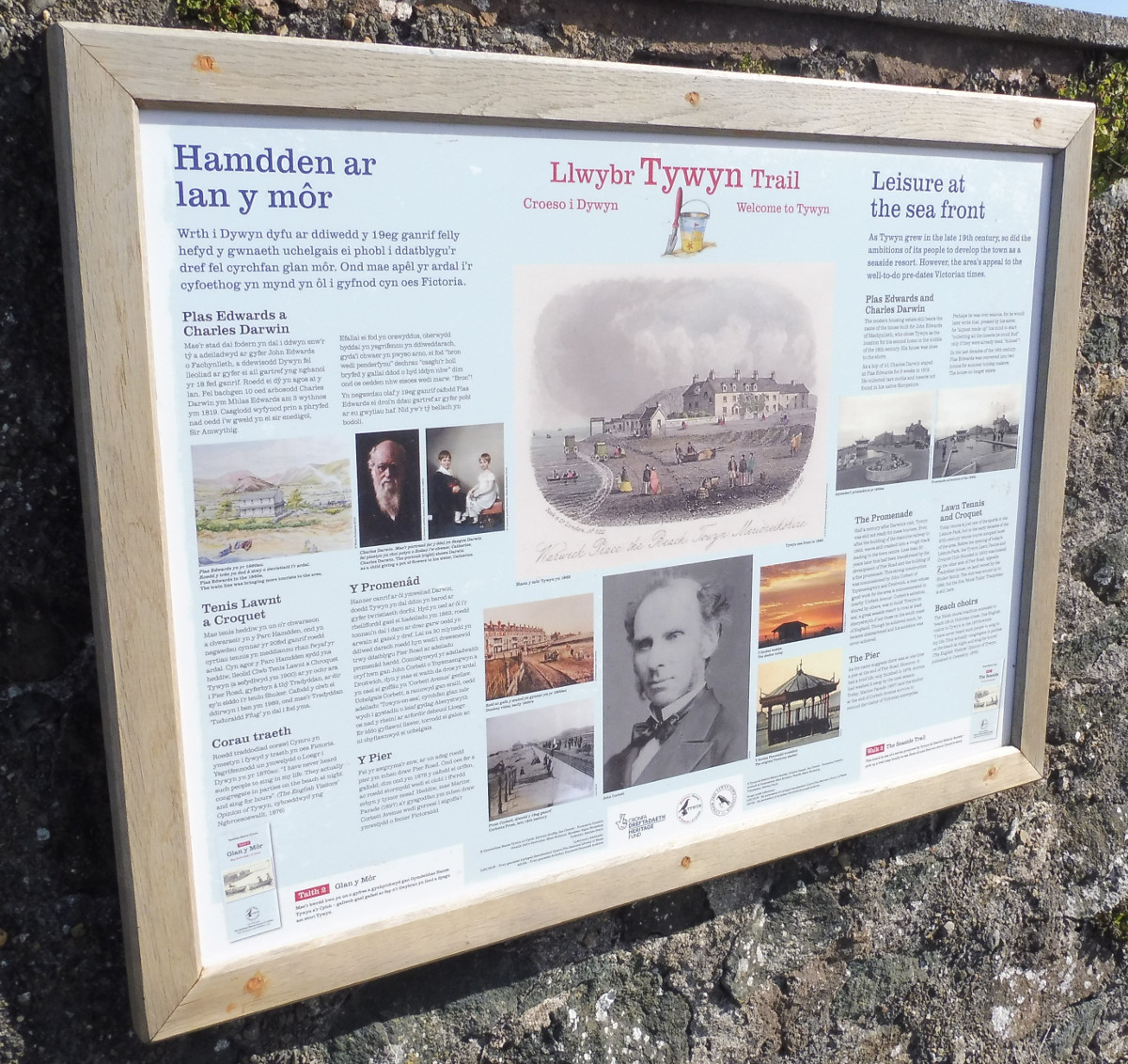
Leisure at the sea front is the theme of the board located on the wall of the small access road between the prom and the Leisure Park. The theme is developed from the first people to choose to make the Tywyn seashore their home because of its attraction as a place of leisure. That was in the early nineteenth century and a famous visitor was Charles Darwin. Much later in that century John Corbett, a Midlands entrepreneur with a great love for Tywyn, worked hard to develop the prom and the town. Another Victorian project, the pier, which gives the nearby road its name, quickly succumbed to winter storms. Pictures and descriptions convey some of the feeling of the seaside here in ages past.
The Old Centre
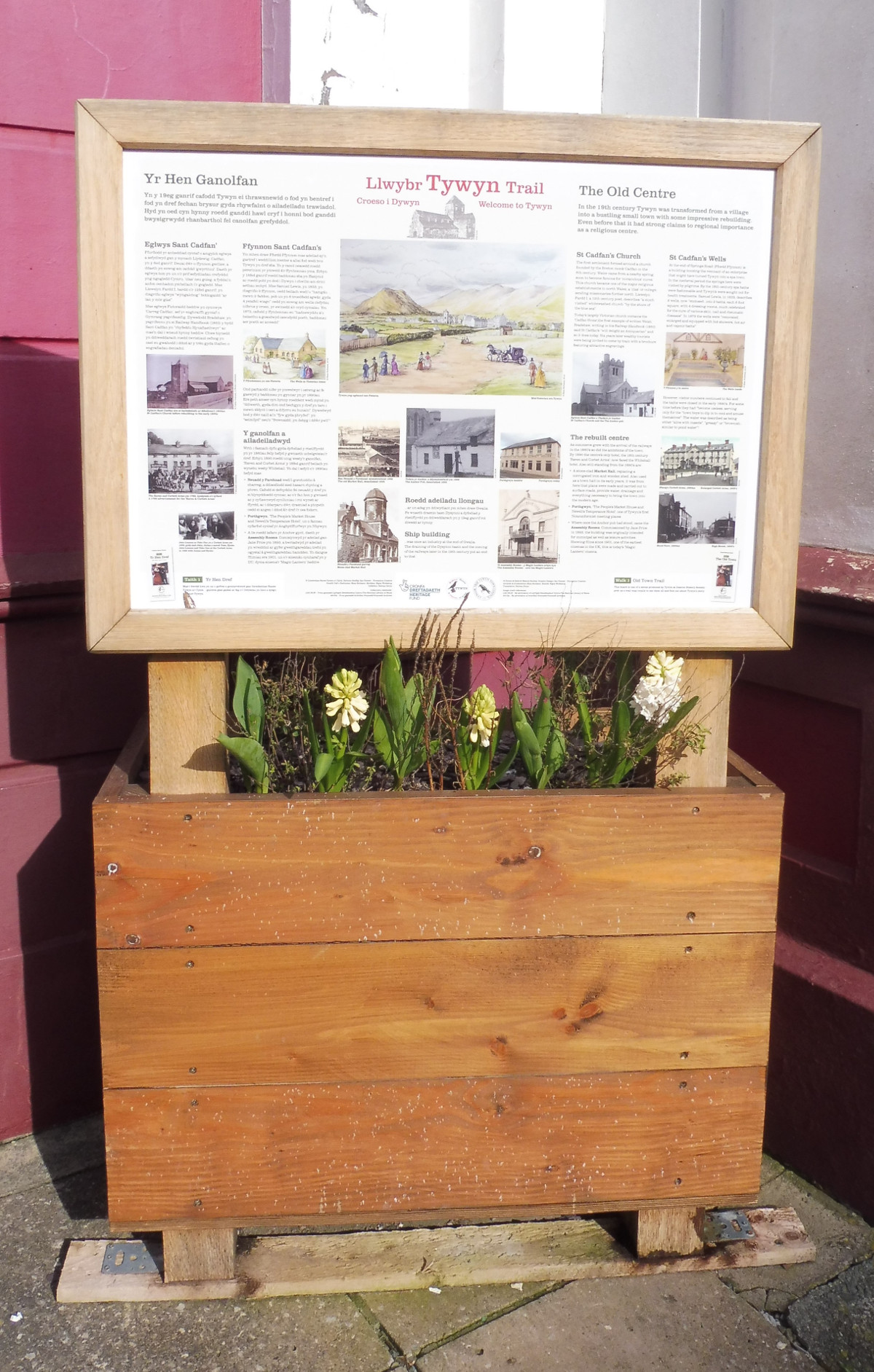
The Old Centre board is located by the cinema. Some of the most famous and historic buildings in Tywyn are close by, in variable states of repair. St Cadfan's Church is ancient and celebrated in the poem of a medieval bard. The church is open to visitors and contains the Cadfan Stone, the earliest example of written Welsh. Nearby is the building which housed St Cadfan's Wells. Amongst the buildings dating from a major rebuilding in the 1890's is the Magic Lantern cinema, former Assembly Rooms. These are the main points covered in this board.
Protected and connected: from prayer to pioneering technology
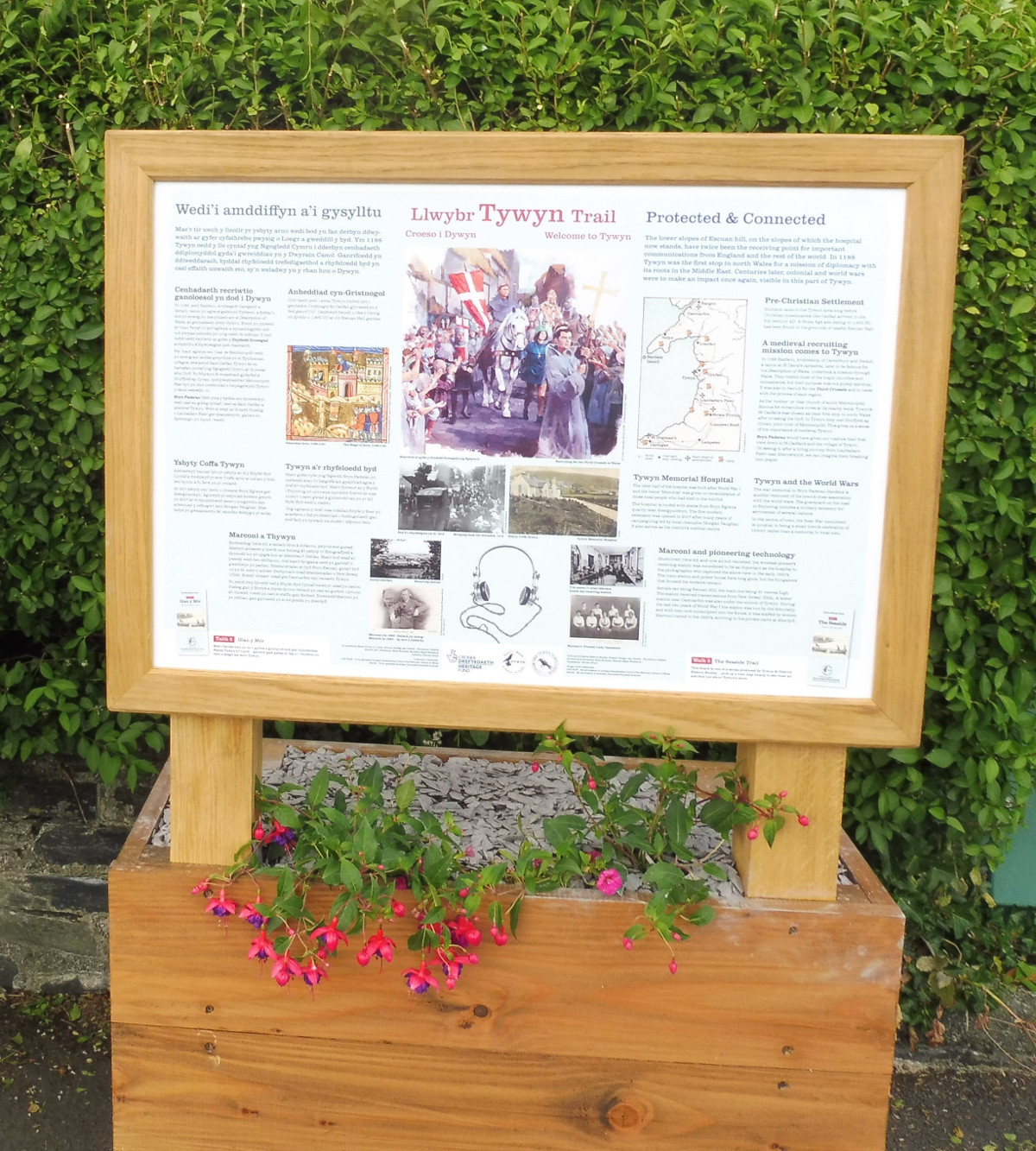
Protected and connected: from prayer to pioneering technology is the title of the planter-based board prominent on the corner junction of Cadfan Road and the coastal road to Aberdyfi. This site is adjacent to the war memorial hospital and close to the war memorial at Bryn Paderau gardens, a low hill looking down onto St Cadfan's church. This spot would have given the famous visitor Gerald of Wales his first sight of Tywyn in 1188 when recruiting for a crusade. Both the signficance of that and the importance of Marconi's radio receiving station from modern times, memorialised in nearby Marconi Bungalows, are picked up in the theme of connection and communication to the wider world from our remote town.
